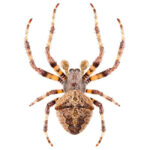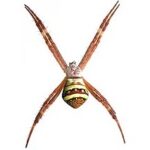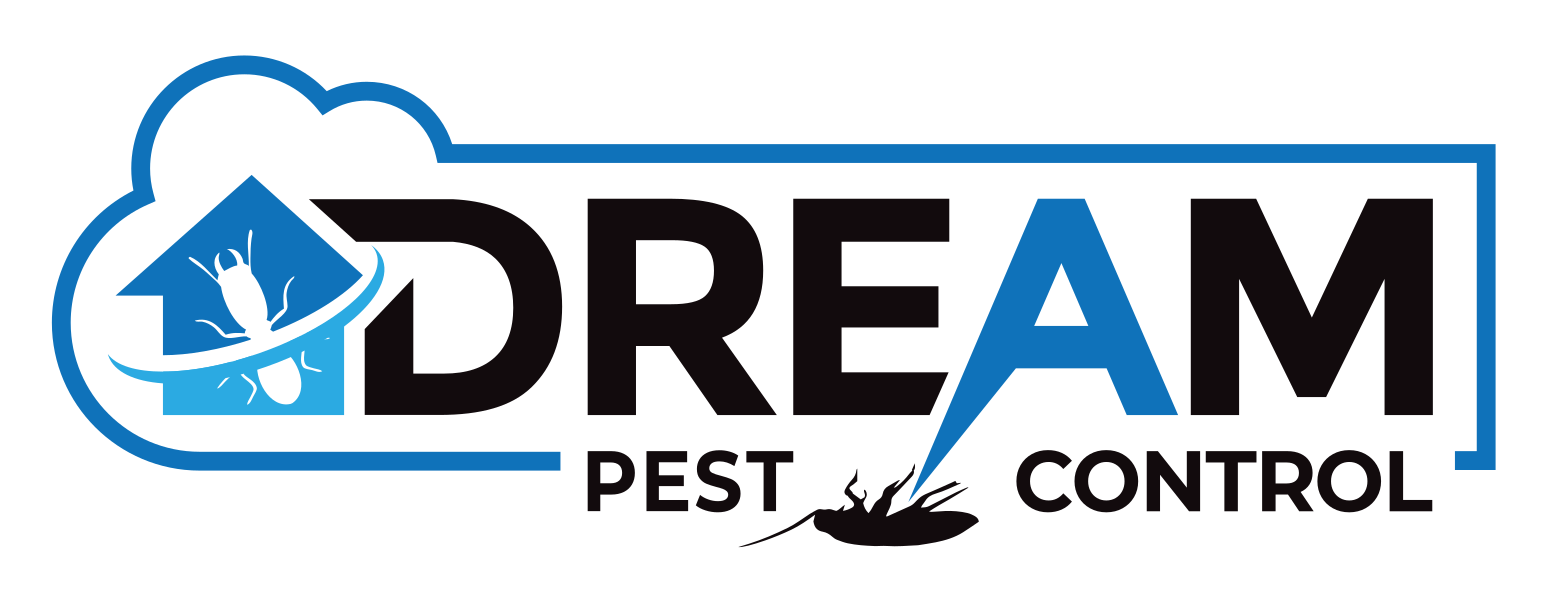Are you struggling with pesky spiders invading your home or office?
At Dream Pest Control, we provide top-tier spider treatment services that prioritise the health and wellbeing of your family or employees. Our skilled technicians utilise cutting-edge methods and environmentally friendly products to address spider issues effectively and safely. Explore this page for insights into our treatment techniques, the advantages of our services, and practical advice on preventing spider infestations.
Trust Dream Pest Control to keep your property free from spiders and other bothersome pests with our comprehensive, trustworthy solutions.
If you’re dealing with a spider infestation in the Gold Coast area, don’t let these eight-legged intruders disrupt your peace of mind. Contact Dream Pest Control today to schedule a comprehensive spider treatment. Together, we can ensure your home or business remains a safe and spider-free environment, free from the potential hazards posed by these unwelcome eight legged pests.


Why Do You Need Spider Treatment?
Spiders can be unsettling houseguests. While they play a vital role in the ecosystem by controlling insect populations, an infestation in your home or business can lead to discomfort and potential health risks. Here’s why professional spider treatment from Dream Pest Control is essential:
- Fear and Anxiety: Arachnophobia, or fear of spiders, is one of the most common phobias. An infestation can cause significant stress and anxiety for those living or working in the space.
- Health Risks: Some spider species in the Gold Coast area can deliver bites that cause allergic reactions or other health complications. Professional spider treatment can mitigate these risks.
- Peace of Mind: Knowing your home or business is spider-free can provide immense peace of mind for your family, employees, or customers.
- Effective and Safe Treatment: Over-the-counter spider control products can be ineffective and potentially dangerous if used incorrectly. Our expert technicians use safe and eco-friendly techniques to ensure effective spider control.
Why Choose Dream Pest Control for Spider Treatment?
When it comes to spider control, you need a team of professionals who are committed to providing top-tier services. Here’s why Dream Pest Control is your ideal choice for spider treatment:
- Experienced Technicians: Our trained technicians have extensive experience dealing with various spider species and infestations, ensuring effective and reliable spider control.
- Environmentally Friendly Solutions: We use eco-friendly methods and products to protect your family, pets, and the environment, without compromising on effectiveness.
- Customized Plans: We understand that every spider infestation is unique. We tailor our spider treatment plans to meet the specific needs of your home or business.
- Prevention Strategies: Besides treating the current infestation, we offer prevention strategies to protect your property from future spider infestations.
- Guaranteed Satisfaction: We stand behind our work and offer a satisfaction guarantee. Our job isn’t complete until you’re fully satisfied.
By choosing Dream Pest Control, you’re choosing a team dedicated to making your home or business a safer, more comfortable place. Reach out to us today for effective and reliable spider treatment services.


How to Prevent Spiders?
Preventing a spider infestation is just as crucial as treating one. Here are some useful tips to keep your home or business free from these eight-legged creatures:
- Maintain cleanliness: Regularly clean your indoor and outdoor spaces. Spiders are attracted to clutter, as it provides them with plenty of hiding spots. Regular cleaning can help reduce these potential habitats.
- Seal gaps and cracks: Inspect your property for any gaps or cracks that could serve as entry points for spiders. Seal them with silicone caulk or another appropriate material to prevent access.
- Proper lighting: Spiders are attracted to light as it lures their prey. Use yellow or sodium vapor light bulbs outdoors to attract fewer insects, thereby reducing the spider’s food source.
- Regularly inspect and clean storage areas: Basements, attics, and other storage areas are ideal habitats for spiders. Regular inspection and cleaning can help prevent infestations.
- Landscaping: Keep vegetation, mulch, and wood piles away from your home’s foundation to reduce the likelihood of spiders making their way inside.
- Regular pest control inspections: Schedule regular pest control inspections and spider treatments with Dream Pest Control to identify any potential problems early and maintain a spider-free home or business.
Common Spider Species on the Gold Coast
The Gold Coast is home to a wide variety of spider species, some of which are more likely to venture into human habitats than others. Knowing what kind of spider you’re dealing with can help in determining the best course of action. Let’s take a look at the most common ones you may encounter:

Huntsman Spider (Sparassidae)
Appearance: Huntsman spiders are large and fast, with long legs spread out in a crab-like fashion. They are usually brownish in colour with varied markings.
Size: Huntsman spiders are among the largest spiders in Australia. They can have a body length of up to 4cm with a leg span of up to 15cm.
Habitat: They are commonly found in homes, sheds, and cars. Huntsman spiders prefer to live under loose bark on trees, in crevices on rock walls and buildings, and beneath foliage.
Risks: Huntsman spiders are not generally a threat to humans. They are non-aggressive and prefer to run away when disturbed.

Daddy Long Legs Spider (Pholcidae)
Appearance: They are recognized by their very long, thin legs and small body. They are usually pale in colour.
Size: Daddy Long Legs spiders are known for their extremely long, thin legs compared to their small bodies. The body length can be up to 1cm, but their leg span can reach up to 5cm.
Habitat: Daddy Long Legs Spiders are often found in corners of homes, sheds, and other indoor places.
Risks: These spiders are harmless to humans. They are non-venomous and typically non-aggressive.

Redback Spider (Latrodectus hasselti)
Appearance: Redback spiders are black with a distinctive red stripe on the upper side of their abdomen..
Size: Females are larger, with a body length of about 10mm, while males are smaller, about 3-4mm.
Habitat: They are often found in dry, sheltered places such as sheds, mailboxes and under toilet seats.
Risks: They are one of the few spider species in Australia that can be seriously harmful to humans, and a bite should be immediately treated by a medical professional.

Black House Spider (Badumna insignis)
Appearance: They are dark brown to black in colour with a velvety texture.
Size: Females are larger, with a body length of up to 18mm, while males are smaller, about 9mm.
Habitat: They are often found in window frames, under eaves, gutters, bricks, and logs.
Risks: They are not usually aggressive, but their bite can cause discomfort to humans.

White-tailed Spider (Lampona cylindrata)
Appearance: White-tailed spiders are dark reddish to grey in colour with a cylindrical body and a distinct white or grey spot on the tip of their tail, hence their name.
Size: They have a body length of 12–20mm.
Habitat: These spiders are commonly found inside houses, under bark, rocks, leaf litter, and in gardens.
Risks: While their bite can be painful, it is not considered dangerous to humans.

Garden Orb Weaver Spider (Eriophora transmarina)
Appearance: These spiders have a bulbous abdomen, often with intricate, colourful designs.
Size: They are medium to large in size, with bodies up to 2cm long.
Habitat: They are commonly found in gardens, fields and forests where they spin large, intricate, wheel-shaped webs.
Risks: They are not aggressive spiders and their bite is not dangerous to humans.

Golden Orb Weaver Spider (Nephila plumipes)
Appearance: Golden orb weaver spiders are large, and as their name suggests, they have a golden hue to their bodies and their impressive orb-shaped webs.
Size: Females are much larger than males, with a body length of up to 45mm, while males only reach about 6mm.
Habitat: They are typically found in open forests and woodlands, coastal sand dune systems, and gardens.
Risks: They are not generally aggressive and their bite may cause minor discomfort to humans.

St Andrew’s Cross Spider (Argiope keyserlingi)
Appearance: St Andrew’s Cross spiders are known for their bright colours and their characteristic pose in the web, where they align their bodies in the shape of a cross.
Size: The body length of females is up to 16mm and males up to 4mm.
Habitat: They are garden spiders and usually found in summer in garden areas around the home.
Risks: They are not aggressive and their bite can cause minor discomfort to humans.

Funnel-web Spider (Atrax robustus)
Appearance: Funnel-web spiders are large and bulky spiders, with a shiny black or brown carapace.
Size: Males are smaller with a body length of about 2.5cm, while females can reach up to 3.5cm.
Habitat: They are usually found in moist habitats, such as under logs, in rough-barked trees, and in crevices in rocks.
Risks: They are considered one of the most dangerous spiders in the world, and their venom can be lethal to humans, particularly children. If bitten, seek immediate medical attention.

Brown Trapdoor Spider (Misgolas rapax)
Appearance: Brown Trapdoor spiders are often mistaken for Funnel-webs. They are generally brownish in colour, with a stocky, robust body structure.
Size: They can range in size, with a body length from 1.5cm up to 3cm for females and males are smaller.
Habitat: As their name suggests, they construct burrows with a cork-like trapdoor made of soil, vegetation, and silk.
Risks: They are not usually aggressive and the venom of a Brown Trapdoor spider is less toxic to humans than that of a Funnel-web.





